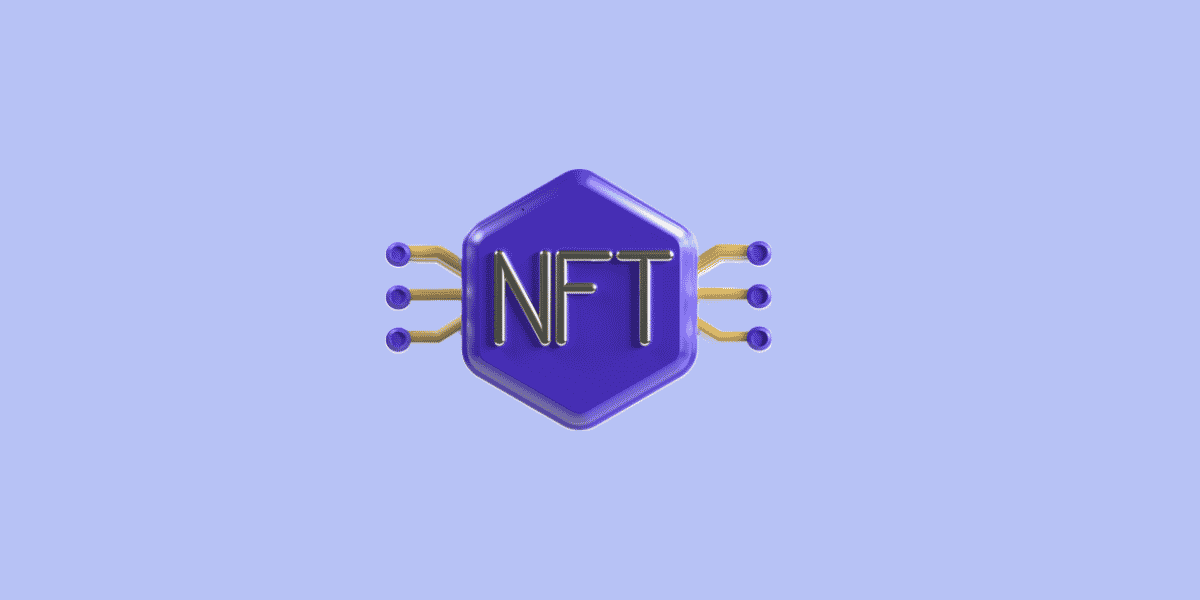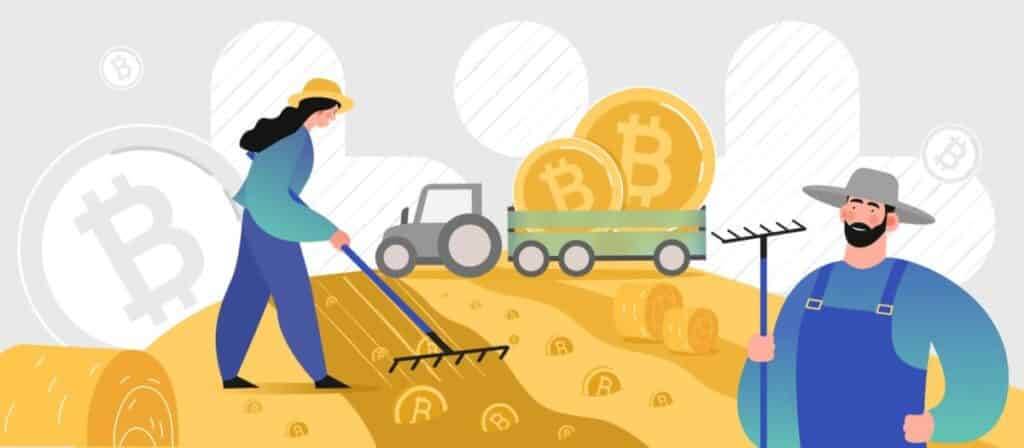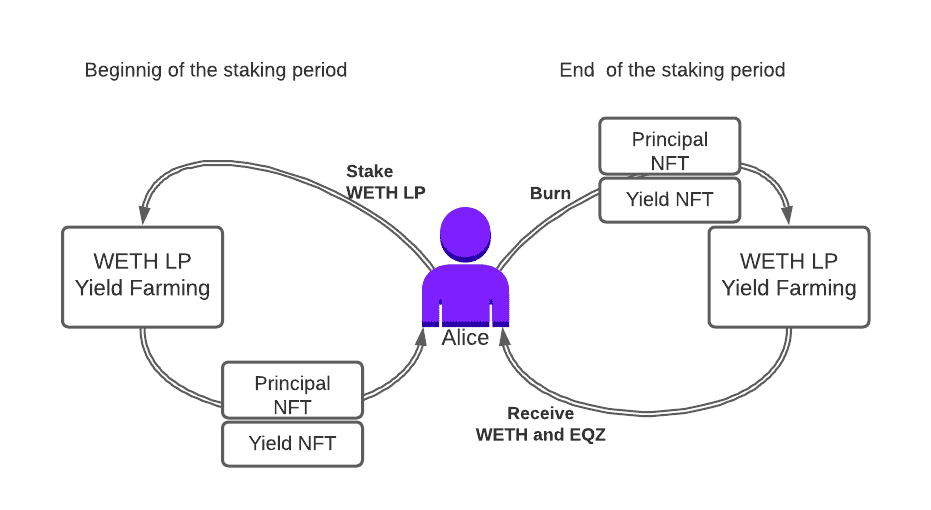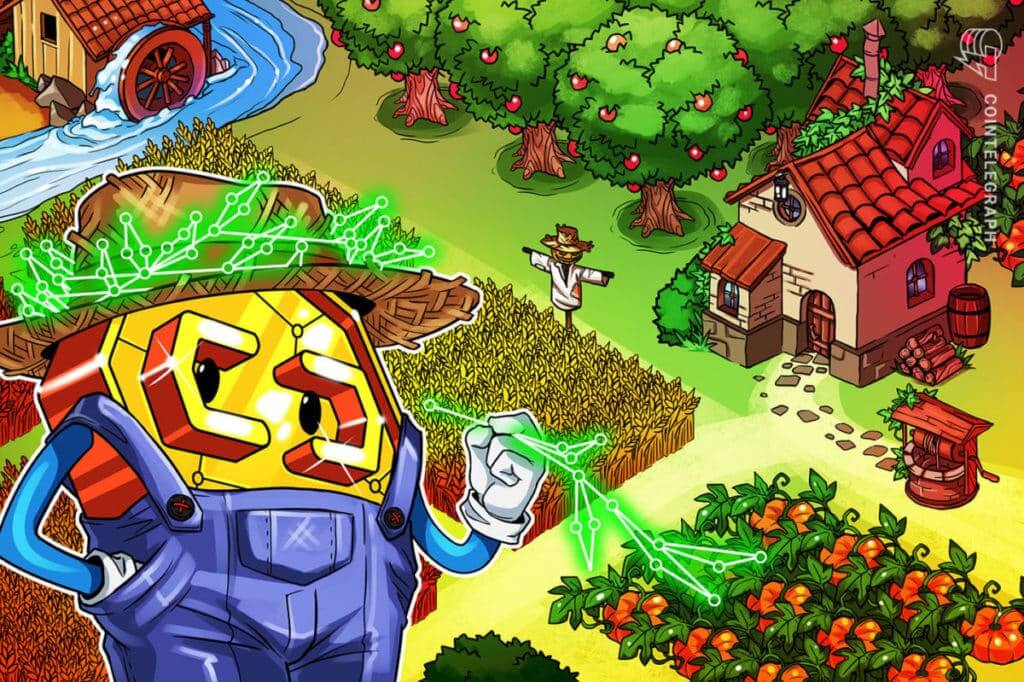What is NFT yield farming, and how does it work?

What is NFT yield farming, and how does it work?
Have you ever wondered what NFT yield farming means during your career in the crypto industry? Is it related to traditional farming at all? And why has that term been so popular lately?
For several reasons, the crypto community has undoubtedly started paying more and more attention to non-fungible tokens. Their skyrocketing growth in popularity and demand has attracted many enthusiasts over the last two years.
NFT yield farming is just one of the things within this industry that have aroused great interest. If yours was bothered by whether this term refers to farming, no, we will disappoint you. NFT farming refers to the place where DeFi and NFTs collide.
To understand the whole concept behind the NFT yield farming, let’s start from the beginning and see what Yield farming represents in the first place, shall we?
NFT yield farming – all you need to know about it
NFT yield farming is clearly one of the hottest topics since the 2020 DeFi Summer. Back in 2021, the total value locked of liquidity pools continues to reach new highs, leaving crypto enthusiasts to wonder what Yield farming is and all the essential information regarding it.
We’ve witnessed NFTs be expensive but not liquid. Not until DeFi thinking intervened, to be precise. The excitement in DeFi has shifted to the NFT market. Groups are formed to mint scarce digital artifacts to be attained in authentic ways and financialize their ownership.
It seems that lately, almost everything in DeFi seems to link back to Yearn.Finance in one way or another. NFT yield farming became popular once the excess of weird new experiments was led, particularly by the MEME token, inspired by a tweet from ConsenSys staffer Jordan Lyall.
The crossover event of NFT yield farming

NFT yield farming became one of the hottest topics in fall 2018 when the excitement engendered after years of fertilizer. The harvest was finally ready. Once the DeFi gateway developed Y.Insure, a completely new insurance primitive and a way to do KYC-free insurance on any crypto asset, it utilized Non-Fungible Tokens to represent the policy with insurers.
According to Yearn’s lead developer, Andre Cronje, insurance policies include unique properties. Thus, ERC-20 didn’t make sense. So, once reminded of ERC-721 existence by DeFi’s top Chad, the industry seemed to run with it.
It’s evident that the causal relationship between NFTs and yield farming is still uncertain. What’s clear by now is that the more significant point of DeFi and NFT coming together is more about a growing mood than just a transparent chain of events. DeFi showed utterly new ways how available finance is able to become more elfin; elves need toys, so NFTs were right there.
Blockade Games, for example, represents a company that’s focused on searching for new ways to push the properties of tokenized game assets to their limit. According to Blockade CEO, gamers want to play, and crypto communities have always tried to be games.
NFT yield farming in the gaming world
Undoubtedly, DeFi has come to the blockchain gaming space, which is fantastic news for all pro gamers. It enabled gamers to show their gaming skills, collect their rewards as NFTs, and stake them within the gaming platform to earn yields.
NFT is set to disrupt the gaming industry right after music and art. Blockchain-based gaming platforms are using NFT gamification and Yield Farming to maximize the rewards for the players and keep them hooked as much as possible.
DeFi platforms that leverage NFTs with Yield Farming
We have provided you with the most exciting and essential DeFi gaming platforms that leverage NFT gamification with Yield Farming:
- Finance
- MOBOX
- Zookeeper
- Pulsar Farm
- money
What is yield farming exactly?

When it comes to Yield farming NFT world seems to have improved from previous examples, especially in the gaming world. Yield farming represents a practice of lending or staking crypto assets to generate high rewards or returns in additional cryptocurrency. We are talking about a volatile, innovative, and risky application of decentralized finance known as “DeFi”.
Its popularity reached its highest highs recently due to its further innovation, such as liquidity mining. At the moment, yield farming represents the most remarkable growth driver of the DeFi sector, assisting it to balloon from a market capitalization of 500 million USD to 10 billion USD in 2020.
Understanding yield farming
Yield farming protocols are known to incentivize LP, and liquidity providers, to lock up or stake their crypto assets in a liquidity pool that’s smart contract-based. Keep in mind that these incentives are able to be the following:
- Interest from lenders
- A percentage of transaction fees
- Governance token
Returns are expressed as APY, which is an annual percentage yield. The issued returns’ value decreases accordingly as more and more investors add their funds to the related liquidity pool.
Liquidity mining
In the first place, numerous yield farmers staked popular stablecoins such as DAI, USDC, and USDT. Nonetheless, the most popular DeFi protocols operate on the well-known Ethereum network. They offer governance tokens for liquidity mining in general.
These particular tokens are framed in these liquidity pools in exchange for providing liquidity to DEXs, i.e. decentralized exchanges. Remember, liquidity mining happens once a yield farming participant earns token rewards as extra compensation and becomes a celebrity after the skyrocketing of COMP to its platform users, issued by Compound.
A great majority of yield farming protocols are responsible for rewarding liquidity providers with governance tokens that are usually traded on decentralized exchanges such as Uniswap and centralized exchanges such as Binance.
NFT farming – explained

Unlike traditional yield farming, where you need to deposit digital assets into a liquidity pool to get token rewards, NFT farming uses NFTs instead. The main goal of NFT farming is to create liquidity and utility for NFTs.
Before the advent of NFT farming, non-fungible tokens were considered exclusive digital collectibles that could only be bought, held, and traded by their collectors. Nowadays, NFTs are able to be deployed for earning tokens, giving the new type of digital asset utility and enhancing its liquidity.
At the moment, NFT farming could predominantly be found in Blockchain games, where users can stake in-game items to receive tokens or vice versa.
Axie Infinity – an example of a blockchain game
Axie Infinity represents one of the best examples of a blockchain game with NFT farming capabilities. It’s an excellent NFT yield farming example. In the Ethereum-powered game, players could earn SLP tokens for minting NFTs in the form of new Axies.
Besides the Axie Infinity game, other DApps also provide NFT farming opportunities. Some of these DApps include Mobox, SuperFarm, and Aavegotrchi.
How does NFT farming work?
You’ve probably heard that NFTs exist on blockchains such as Binance Smart Chain, Ethereum, and Polygon. These digital assets also follow standards and are usable in numerous applications. An NFT is interoperable. One digital asset is able to connect with numerous different smart contracts or programs.
To start NFT farming, users need to have their crypto wallets. Once they get it, it’s essential to connect their crypto wallet with some of the blockchains. They’ll need to fund their wallet with a specific token first, depending on the platform of their choice.
After that, it’s necessary to stake that token in a pool. In the end, users can earn rewards based on their proportion of the total pool. Remember, the main idea behind this is the staking portal. Moreover, a staking portal is where you’ll fit NFTs into vaults from which you can earn rewards.
NFT farming with SuperFarm

Perhaps the easiest way to get into NFT farming is with an NFT farming DApp called “SuperFarm”. With it, you can easily access it using the Trust Wallet DApp Browser. Thanks to the cross-chain protocol, you can stake its platform token, super, and earn GEM tokens. GEM tokens are used to purchase NFTs released periodically during NFT Drops. Also, with your Trust Wallet, you can get a hold of SUPER tokens by swapping an ERC20 token for SUPER if you’re using the Ethereum version.
Eventually, it’s possible to securely deploy and store your SUPER tokens in SuperFarm in the Trust Wallet app. When you’ve accumulated enough GEM by depositing SUPER tokens into the famous SUPER pool, you are ready to harvest NFTs during the next Drop.
Keep in mind that you’re able to utilize SUPER as a medium of exchange. As the progress of the platform toward a more decentralized model, you can also use SUPER on governance matters.
What is the risk of NFT yield farming?
Now that you’re familiar with the concept of NFT yield farming, the question is, what is the risk of using it exactly? NFT farming, besides its benefits, is one of the riskiest set outs in the crypto universe.
Numerous NFT farming opportunities are experimental at the moment. It’s an entirely new type of crypto-earning opportunity, and it’s yet to be seen whether it will stand the great test of time or not.
Similarly to conventional yield farming, NFT farmers also face vulnerabilities in the DApp’s smart contract code. It may lead to volatility risk in the platform’s token or a complete loss of funds. As a result, people could face substantial losses once converting the tokens earned back into fiat currency or stablecoins.
The post What is NFT yield farming, and how does it work? appeared first on FinanceBrokerage.
0 Response to "What is NFT yield farming, and how does it work?"
Post a Comment